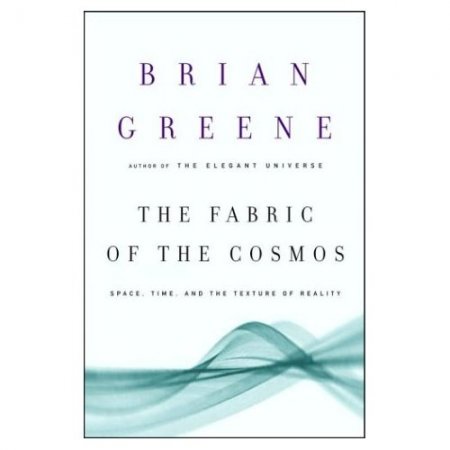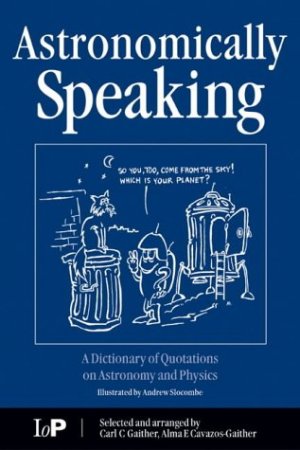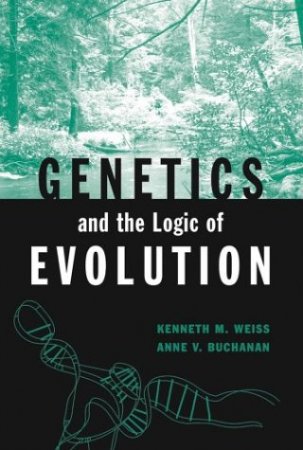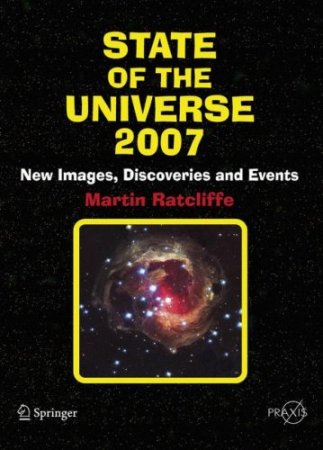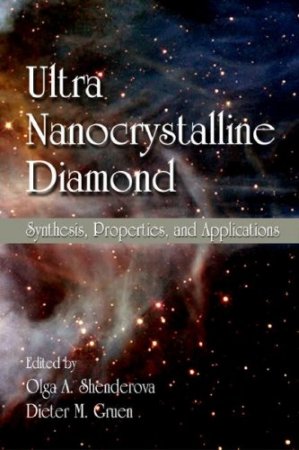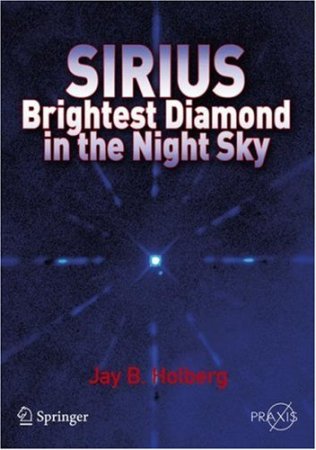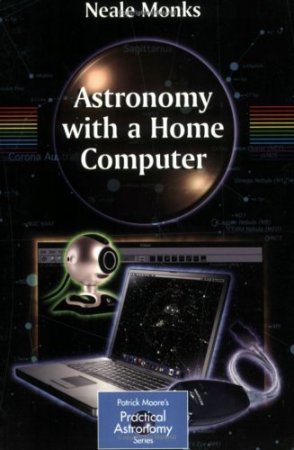НавигацияАрхив новостейСтатистика |
The Fabric of the Cosmos: Space, Time, and the Texture of RealityThe book is very valuable for conjoining a variety of different key theories that well-read readers probably encountered before - special and general relativity, quantum mechanics, and others. He improved my understanding by not discussing them in isolation, but by comparing and conjoining them, pointing our their triumphs and their shortcomings. Astronomically Speaking: A Dictionary of Quotations on Astronomy and PhysicsAstronomically Speaking: A Dictionary of Quotations on Astronomy and Physics serves as a guide to what has been said about astronomy through the ages, from the past to the present. Containing approximately 1,550 quotations and numerous illustrations, this resource is the largest compilation of astronomy and astrophysics quotations published to date. A quick glance through the table of contents illustrates the variety of topics discussed. Readers can quickly and easily access the wit and wisdom of several hundred scientists, writers, philosophers, poets, and academics using the comprehensive indexes. From Suns to Life: A Chronological Approach to the History of Life on EarthThis review emerged from several interdisciplinary meetings and schools gathering a group of astronomers, geologists, biologists, and chemists, attempting to share their specialized knowledge around a common question: how did life emerge on Earth? Their ultimate goal was to provide some kind of answer as a prerequisite to an even more demanding question: is life universal? The resulting state-of-the-art articles were written by twenty-five scientists telling a not-so linear story, but on the contrary, highlighting problems, gaps, and controversies. Needless to say, this approach yielded no definitive answers to both questions. However, by adopting a chronological approach to the question of the emergence of life on Earth, the only place where we know for sure that life exists; it was possible to break down this question into several sub-topics that can be addressed by the different disciplines. Genetics and the Logic of EvolutionIn this book the authors draw on what is known, largely from recent research, about the nature of genes and cells, the genetics of development and animal and plant body plans, intra- and interorganismal communication, sensation and perception, to propose that a few basic generalizations, along with the modified application of the classical evolutionary theory, can provide a broader theoretical understanding of genes, evolution, and the diverse and complex nature of living organisms. Ultrananocrystalline Diamond: Synthesis, Properties, and ApplicationsUltra-Nanocrystalline Diamond: Syntheses, Properties, and Applications is a unique practical reference handbook that brings together the basic science of nanoscale carbon structures, particularly its diamond phase, with detailed information on nanodiamond synthesis, properties, and applications. Here you will learn about UNCD in its two forms, as a dispersed powder made by detonation techniques and as a chemical vapor deposited film. You will also learn about the superior mechanical, tribological, transport, electrochemical, and electron emission properties of UNCD for a wide range of applications including MEMS, NEMS, surface acoustic wave (SAW) devices, electrochemical sensors, coatings for field emission arrays, photonic and RF switching, biosensors, and neural prostheses, and more. Sirius: Brightest Diamond in the Night SkyOf all the fixed stars in the night sky, Sirius is by far the brightest – almost twice as bright as its nearest rival, the star Canopus, which lies too far south to be viewed from most of the Northern Hemisphere. Only the Sun, Moon and the planets Venus, Jupiter and, at times, Mars, appear brighter. Sirius, with its flashing brilliance, is a striking feature of the northern winter sky and has understandably drawn the attention of observers of the night sky for thousands of years. Celestial Mechanics: The Waltz of the PlanetsThe common perception of Celestial Mechanics is that of a discipline which needs advanced mathematics and astronomy to be understood. Yet modern Celestial Mechanics has a rather different taste and a truly interdisciplinary nature. The number of celestial objects known to mankind has dramatically increased, the long-awaited presence of extrasolar planets has been eventually detected around other stars, spaceflight dynamics has brought new applications encompassing rocked dynamics, the place-in-orbit of artificial satellites and interplanetary mission design. Solar System exploration has grown as a long term strategy for the construction of a permanent base on the Moon and a manned mission to Mars. Astronomical Image and Data AnalysisWith information and scale as central themes, this comprehensive survey explains how to handle real problems in astronomical data analysis using a modern arsenal of powerful techniques. It treats those innovative methods of image, signal, and data processing that are proving to be both effective and widely relevant. The authors are leaders in this rapidly developing field and draw upon decades of experience. They have been playing leading roles in international projects such as the Virtual Observatory and the Grid. Astronomy with a Home ComputerHere is a one-volume guide to just about everything computer-related for amateur astronomers! Today’s amateur astronomy is inextricably linked to personal computers. Computer-controlled "go-to" telescopes are inexpensive. CCD and webcam imaging make intensive use of the technology for capturing and processing images. Planetarium software provides information and an easy interface for telescopes. The Internet offers links to other astronomers, information, and software. The list goes on and on. Find out here how to choose the best planetarium program: are commercial versions really better than freeware? Learn how to optimise a go-to telescope, or connect it to a lap-top. Discover how to choose the best webcam and use it with your telescope. Create a mosaic of the Moon, or high-resolution images of the planets... Astronomy with a Home Computer is designed for every amateur astronomer who owns a home computer, whether it is running Microsoft Windows, Mac O/S or Linux. It doesn’t matter what kind of telescope you own either - a small refractor is just as useful as a big "go-to" SCT for most of the projects in this book. |
ПопулярноеОпросОцените дизайн сайта
Немного рекламы |
